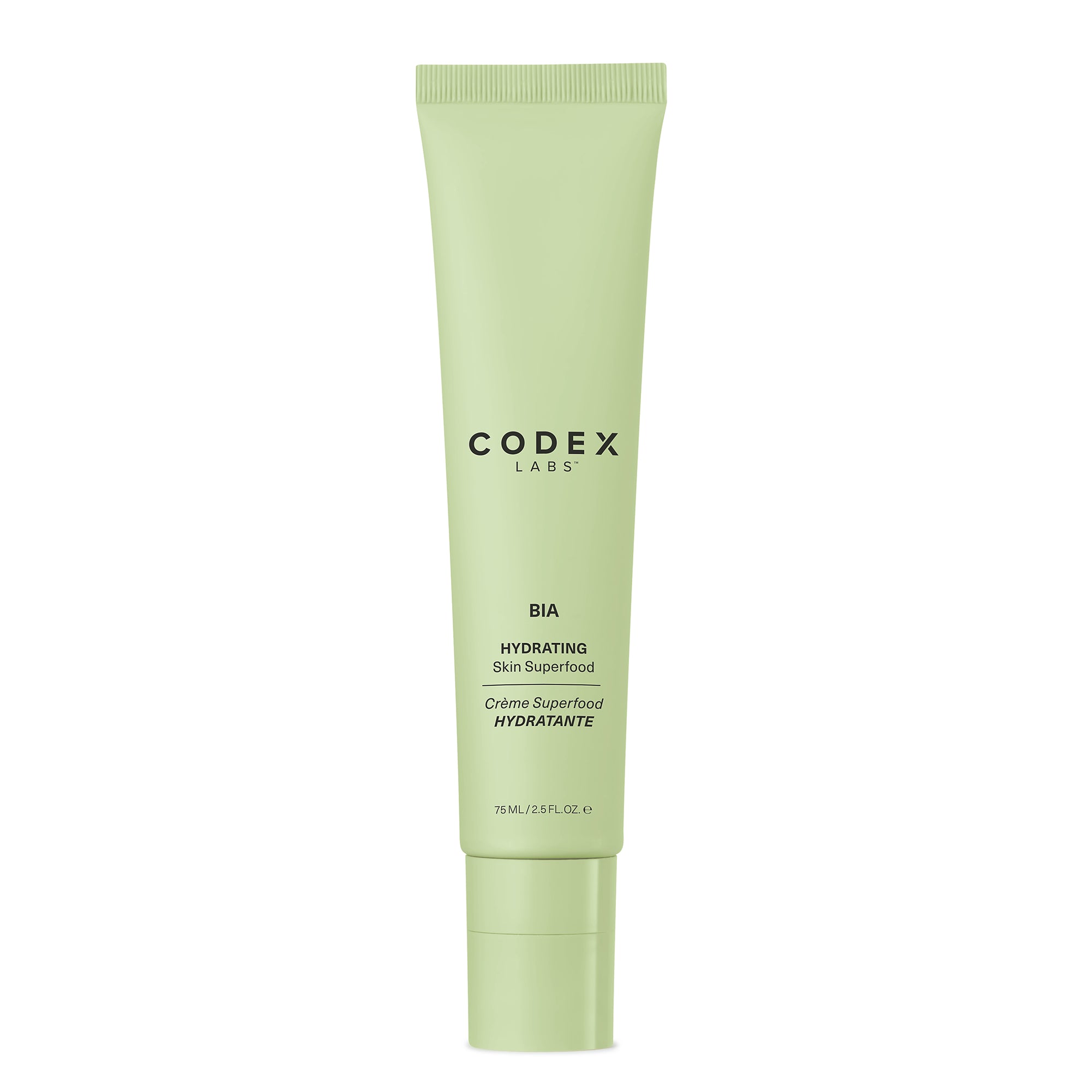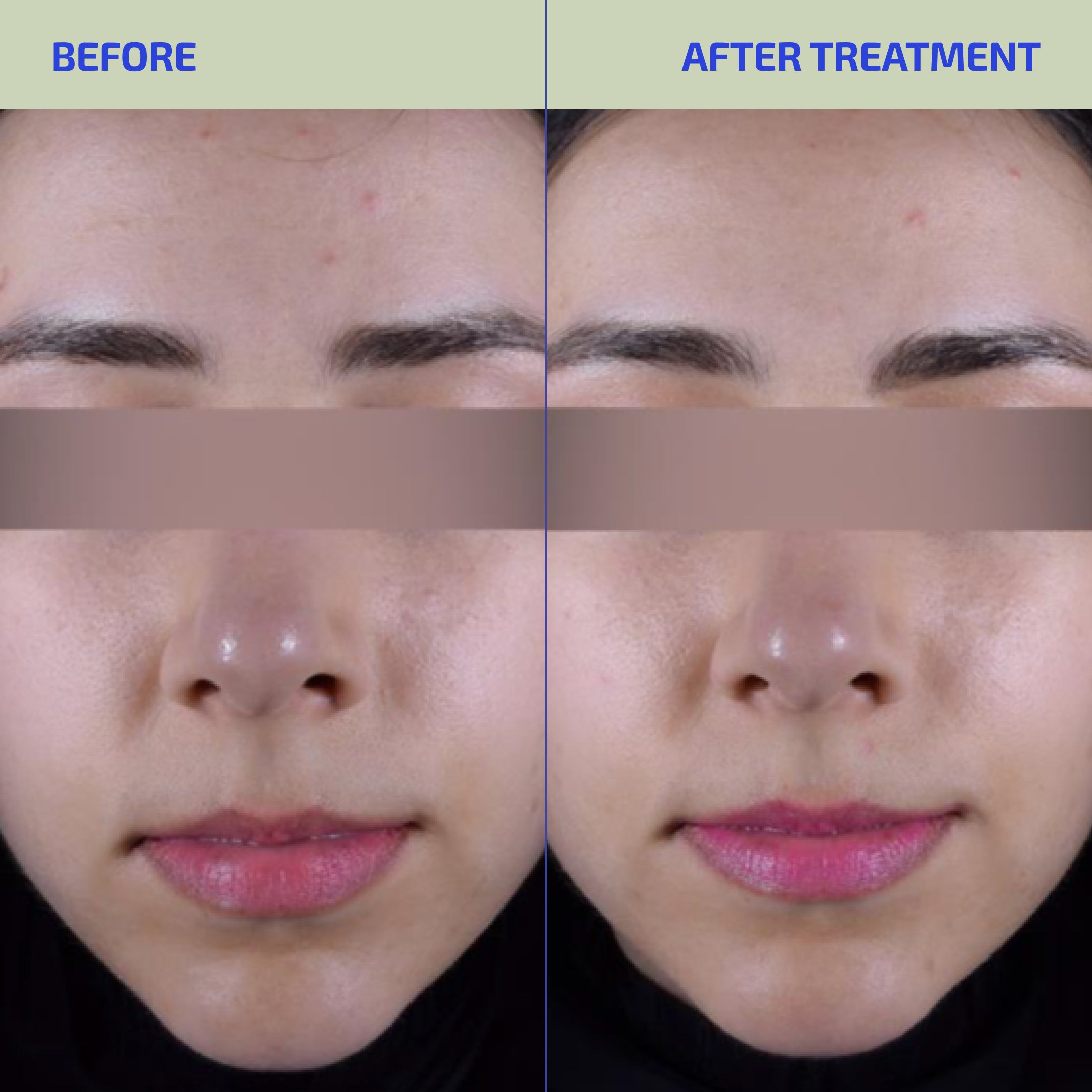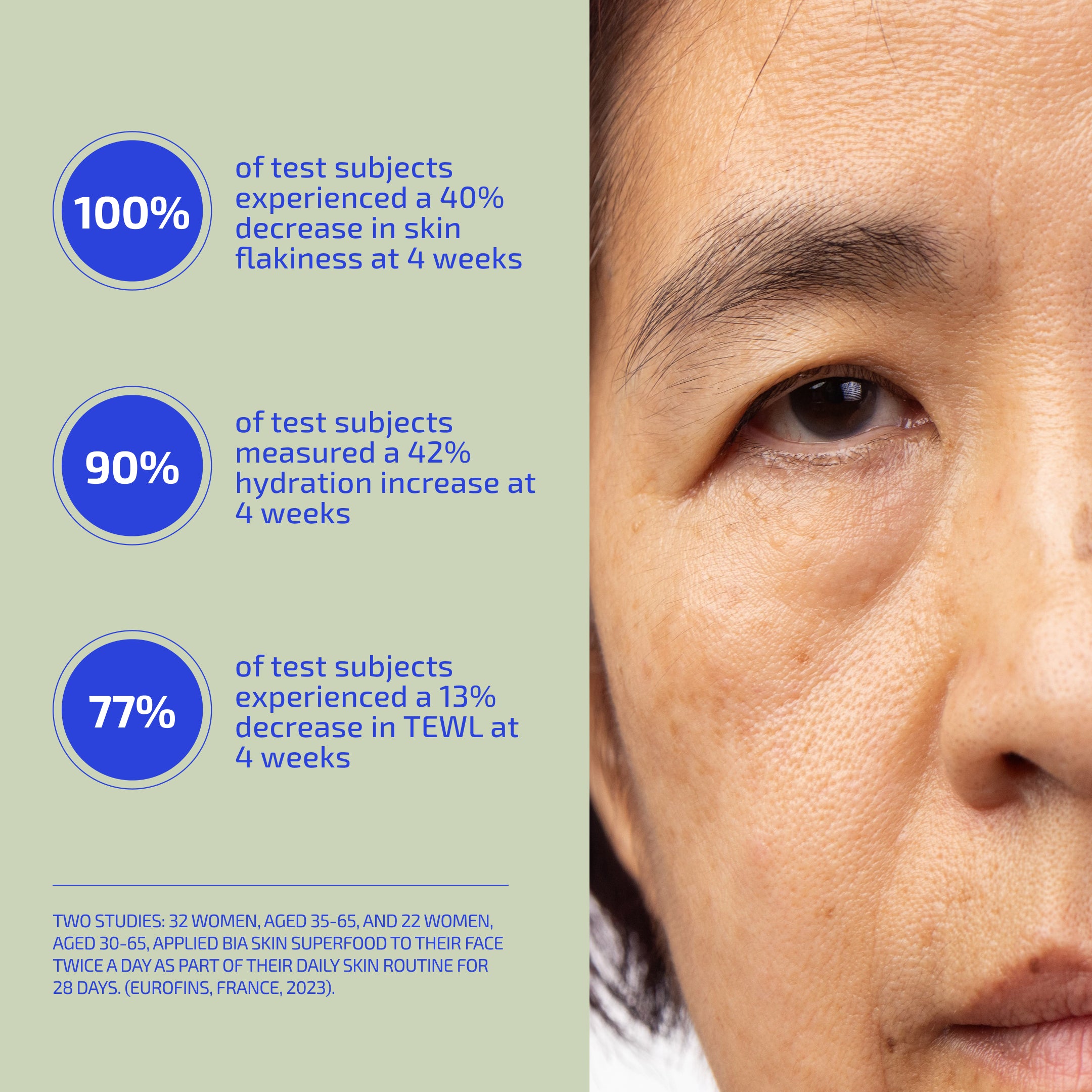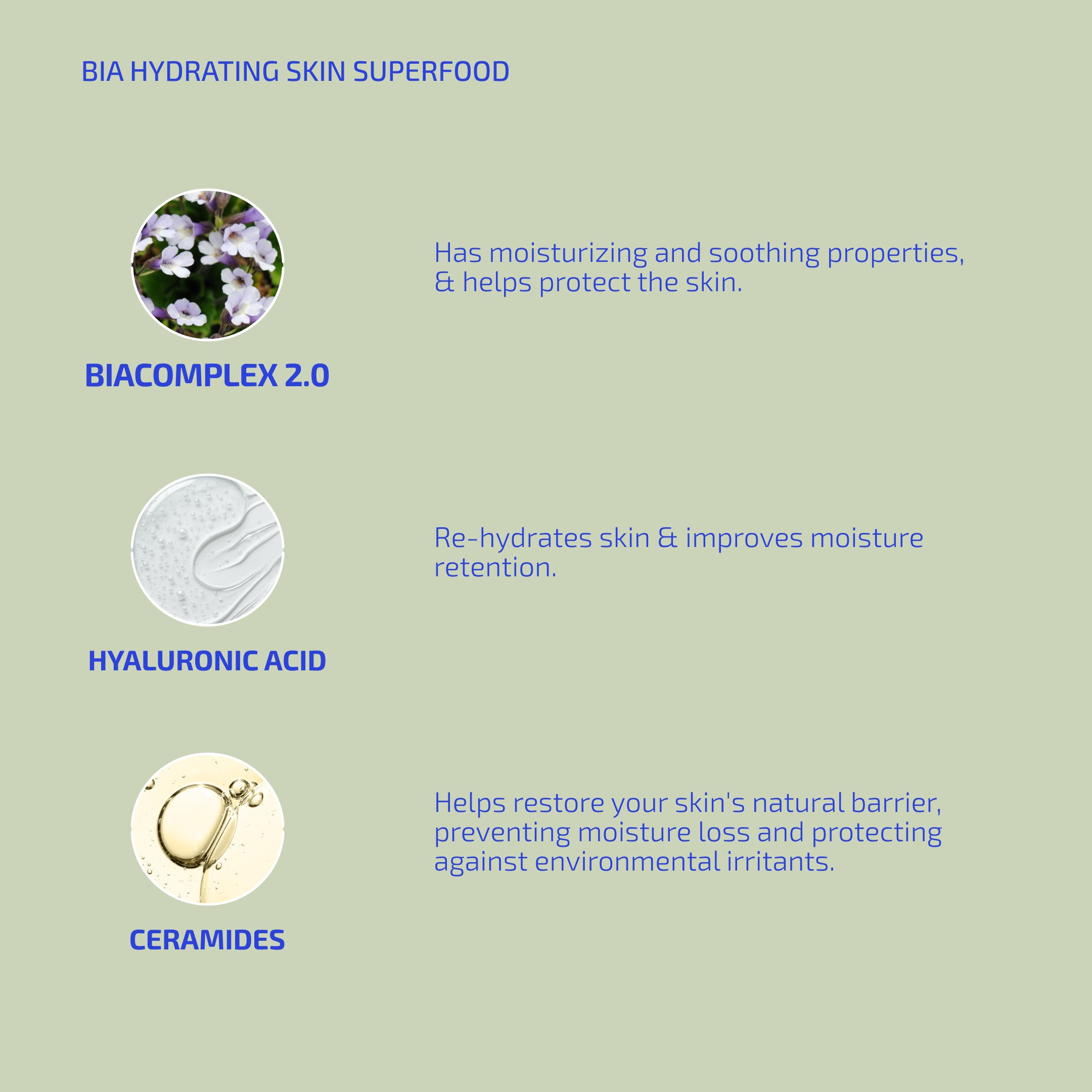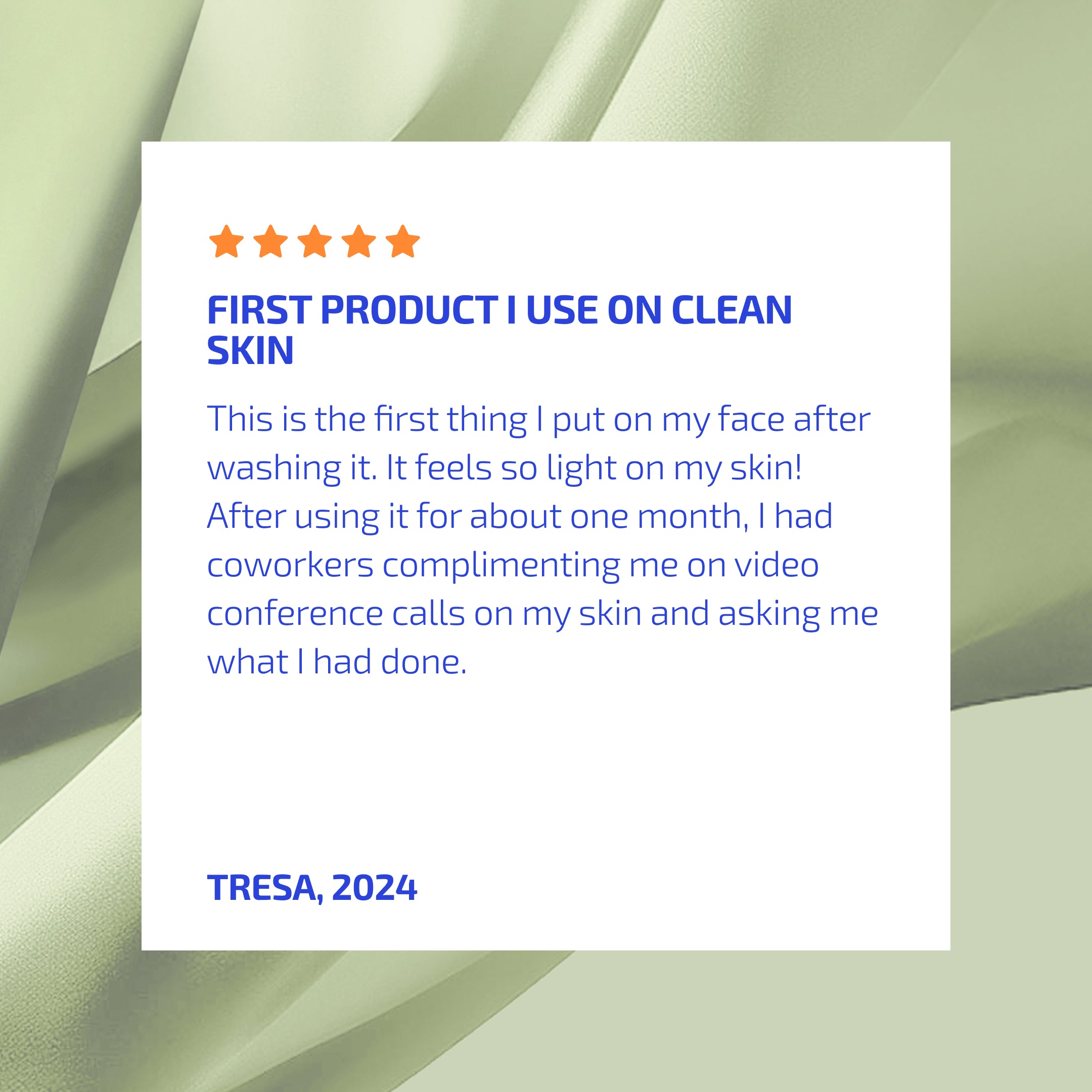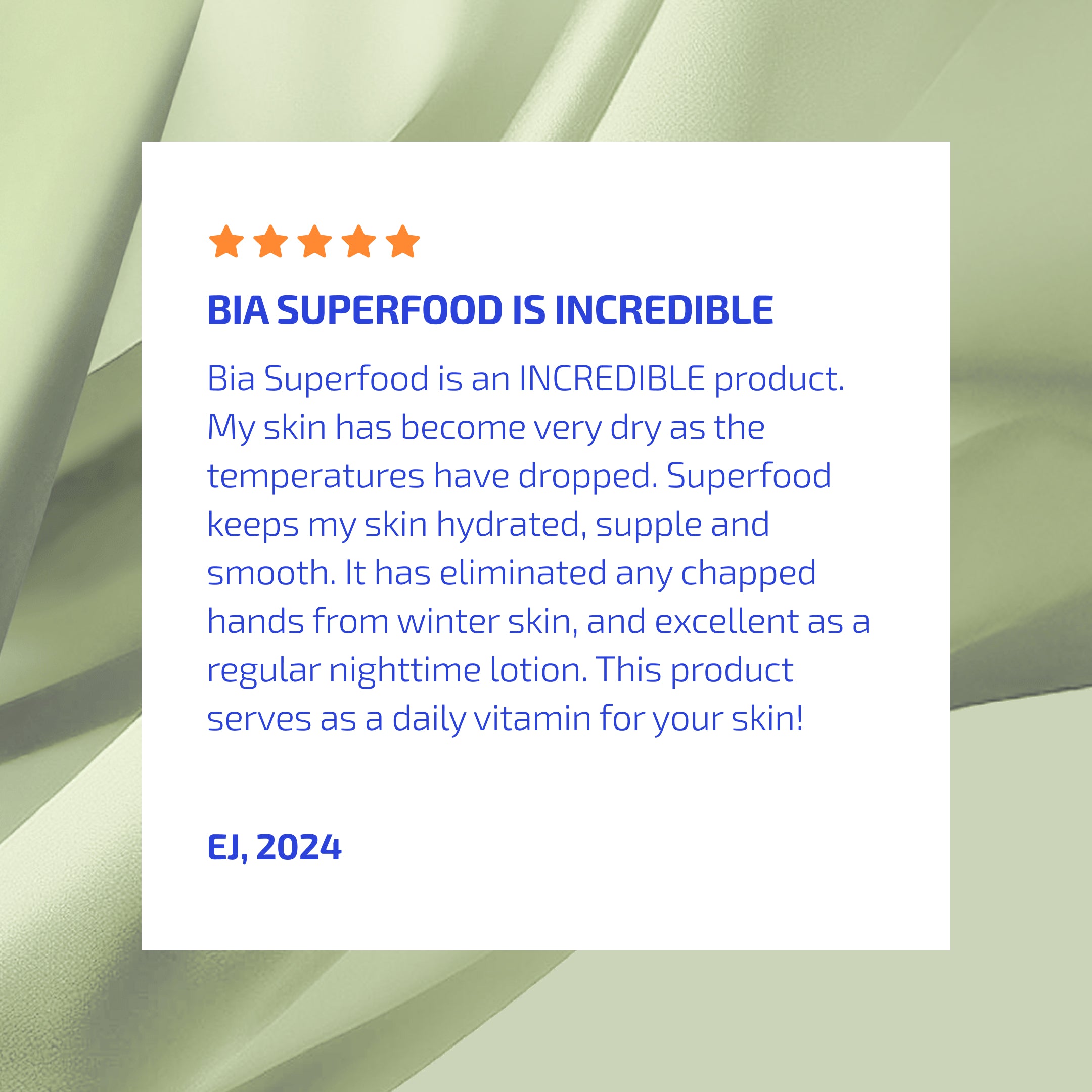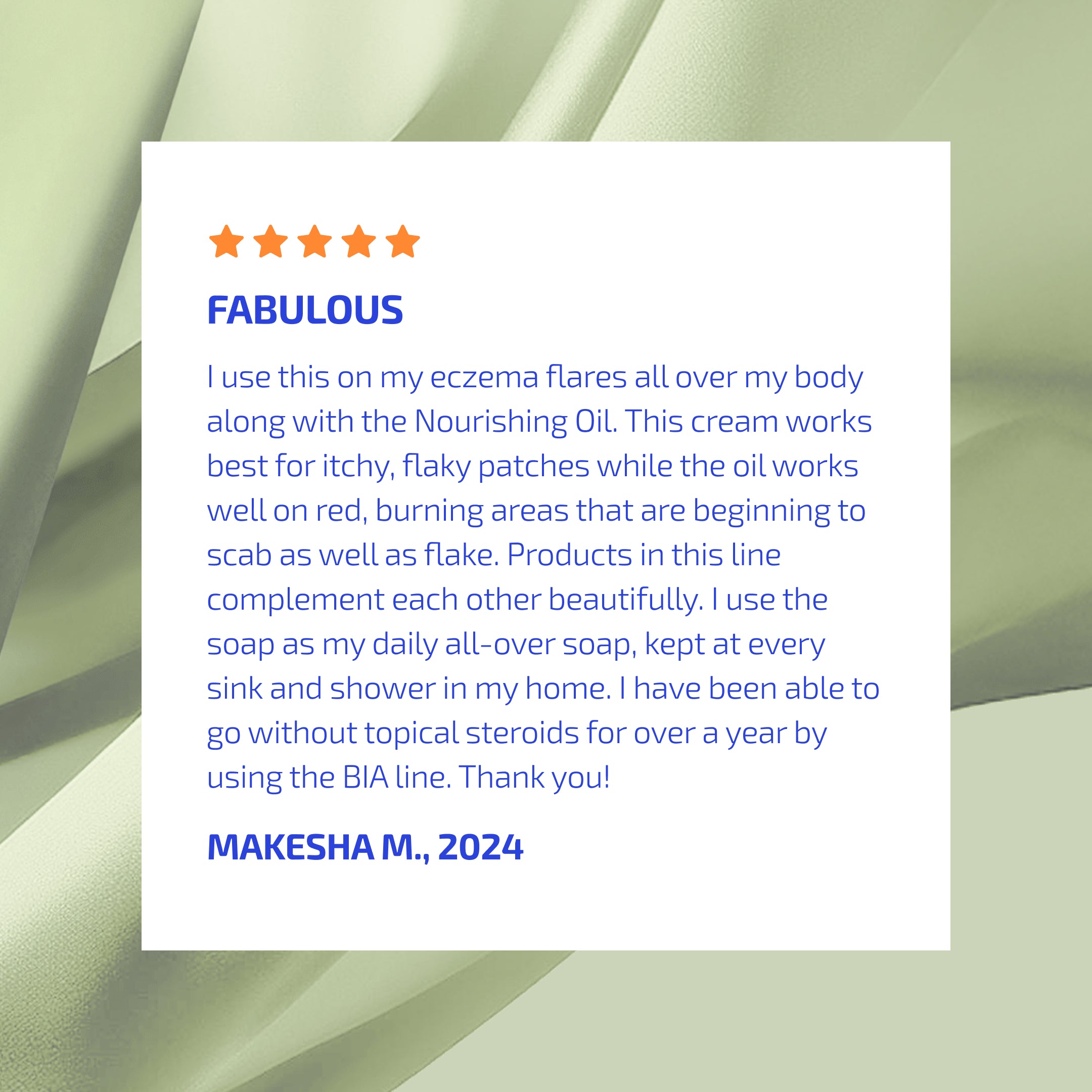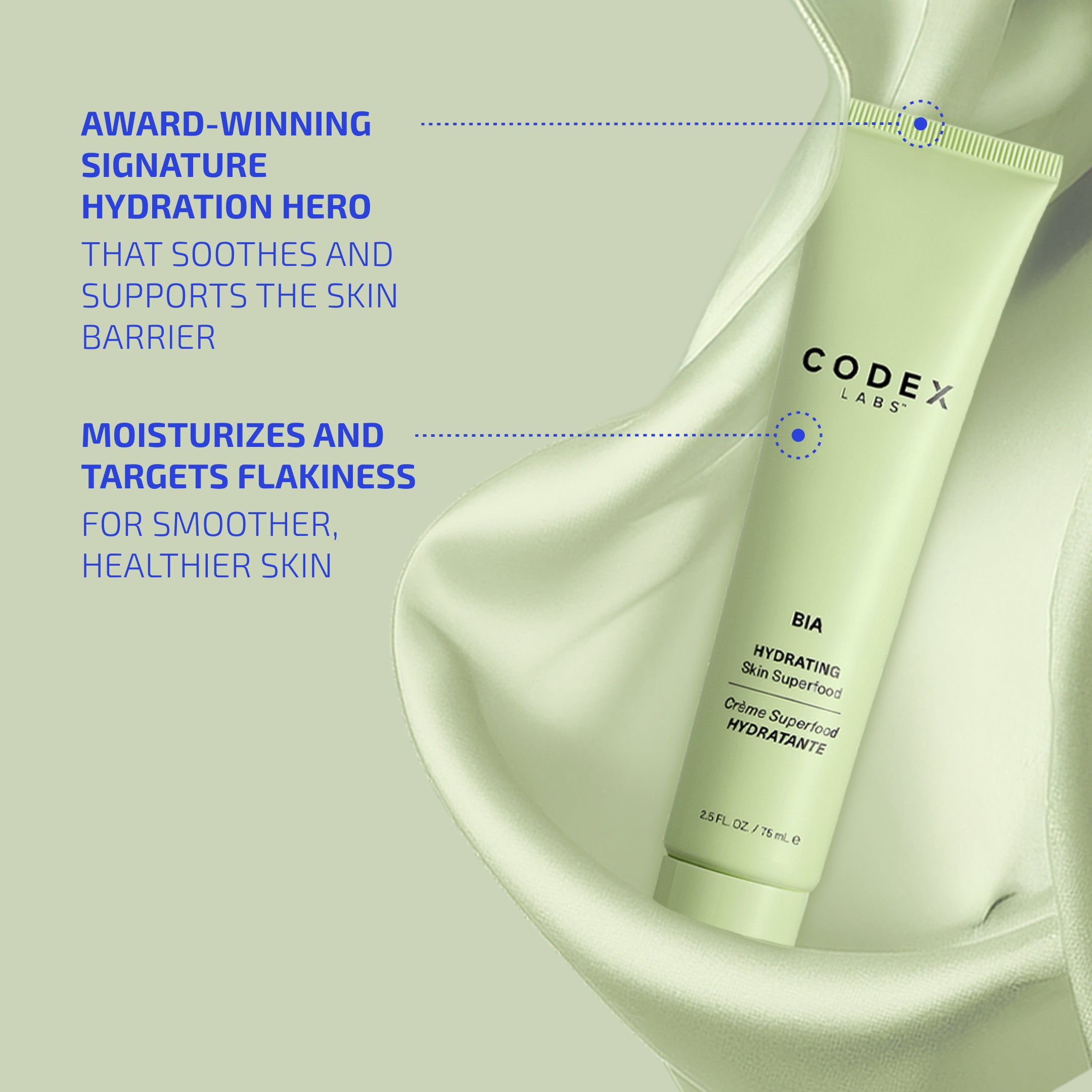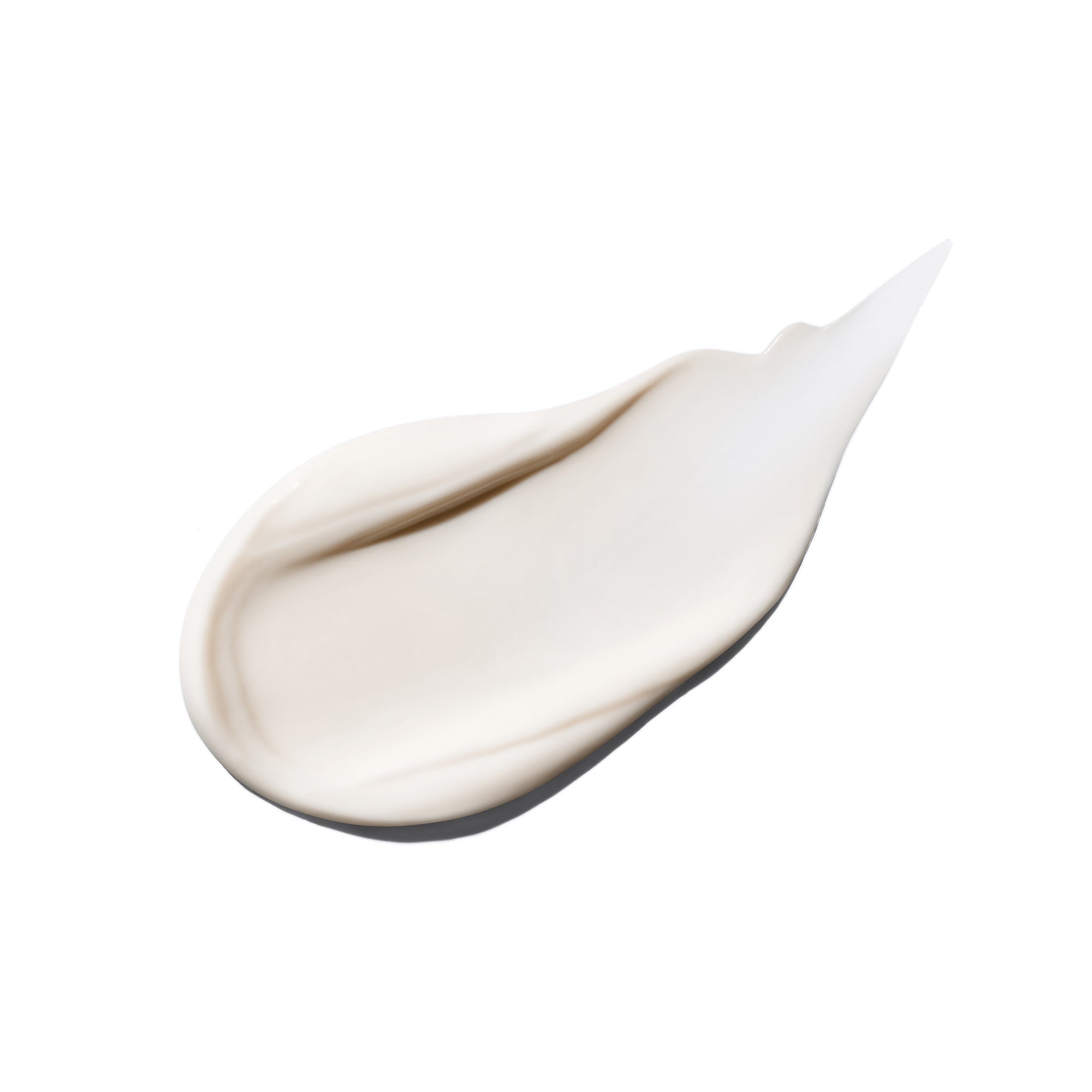More than 60 percent of the human body is comprised of water. Aside from just quenching one’s thirst, water is essential for replenishing dehydrated skin by transporting nutrients and oxygen to cells.
When skin becomes dehydrated, both its appearance and protective function begin to deteriorate. There are a number of outside factors that contribute to water-loss in the skin. Beyond these contributors, the skin’s inherent ability to retain water from within the body is also decreased by the aging process.
This aging phenomenon, coupled with exposure to environmental stressors, weakens skin’s moisture barrier, leading to more rapid water loss. The result? Flaky, dull, and dry skin on the face. You might also notice that skin is less supple and bouncy when it’s dehydrated, which can create wrinkles on the surface.
How to hydrate the skin? It starts with good hydration—with water-replenishing topical products—is essential for a healthy, radiant complexion.
Nature’s Most Essential Ingredient
More than 60% of the human body is comprised of water. Hence, its importance to the body’s proper functioning cannot be overstated. Aside from just quenching one’s thirst, which is a critically important function for regulating body temperature, water is essential for lubricating joints, transporting nutrients and oxygen to cells, and protecting the body’s organs and tissues.
As the largest organ of the human body, skin’s primary job is to serve as a physical barrier in order to protect our insides, from the outside. However, in order for skin to properly perform its protective function, it needs to be adequately hydrated. As is the case with all human organs, the skin is made up of cells which require water. If the skin’s cells are not provided with sufficient amounts of water (i.e., properly hydrated) then the skin becomes dry and dull in appearance.
The body loses water each and every day primarily through breathing, urinating and sweating, which is why it must constantly be replenished. Now, while it’s true that drinking water results in the entire body being re-hydrated, which is why it’s so critically important for a person to drink the recommended amounts of water each and every day (men = 125 oz/ day; women = 91 oz/day), the sad truth is that skin is the last organ to be re-hydrated. It is for this reason that skin requires some help in the re-hydration department.
Dehydrated Skin
There is a wide range of factors that contribute to water-loss in the skin such as sweating, environmental stressors like UV radiation and pollution, changes in season, and of course, drinking insufficient amounts of water. In addition to these water-sapping contributors, the skin’s inherent ability to inhibit natural evaporation of water from within the body is diminished by the aging process. For example, ceramides produced by the body, together with skin cells, comprise skin’s moisture barrier. Ceramides are a type of waxy lipid (fatty) molecule present between the cells of the skin whose function is to keep water within the body. Think of the skin’s cells as bricks and ceramides the mortar that holds the bricks together, thus forming the skin’s natural moisture barrier that inhibits water from prematurely escaping from the body. As a person ages, however, their body naturally produces fewer ceramides.
Aging, coupled with years of exposure to various environmental stressors, negatively impacts their ability to support the skin’s moisture barrier, leading to more rapid water loss and resulting in skin becoming dry, flaky and unhealthy. Moreover, because dry skin is known to be less flexible/stretchy than properly hydrated skin, it also starts to develop wrinkles (picture parched, arid farmland). It is for precisely these reasons that added hydration via the external application of water-containing products onto the surface of the skin, is necessary.
Aqua/H2O
Although we typically refer to the skin’s outermost layer as the epidermis, which is technically correct, the epidermis itself is actually made up of multiple layers. The outermost layer of the epidermis, which is the layer we scratch when we have an itch, is known as the stratum corneum.
While the topical application of a moisturizer containing water in its formula does, in fact, re-hydrate the cells of the stratum corneum, this rehydrating effect is only temporary because the water quickly evaporates from the skin’s surface. This is because water molecules, due to their size, have a difficult time penetrating the stratum corneum.
As a result, the water is left exposed to the environment (air and sun) rendering it vulnerable to rapid evaporation. So, if the effects of water on one’s skin are so fleeting, why do skin care products contain water in the first place. Glad you asked!
First, it’s important to note that the water used in cosmetic products is not conventional tap water. The various regulatory bodies around the world, including the FDA here in the US, require that the water be free of toxins, pollutants and microbes. This type of water is typically referred to as purified, distilled and “aqua” (its European Union name).
That being said, water serves two primary functions in cosmetic products, namely, as a solvent and for making emulsions (i.e., creams and lotions). With regards to water’s use as a solvent, there are numerous ingredients typically found in skin care products that are dissolved in water, i.e., “water-soluble”. Failure to properly dissolve such ingredients can negatively impact their performance since they will remain in particle form making them even more difficult to be absorbed by the skin.
For example, Vitamin C, a highly efficacious and conventionally used antioxidant in skin care products, is a water-soluble active ingredient. Similarly, there are a number of plant extracts used as active ingredients in skin care products that are also water-soluble. The same principle applies when it comes to the presence of “oil-soluble” ingredients. They need to be dissolved in an oil in order to be properly dispersed within a formulation so they, like water-soluble ingredients, can be homogeneously applied onto a user’s skin.
Which brings us to the second primary function served by water. In order to formulate a product as a cream or lotion, an oil phase containing oil-soluble ingredients, and water phase containing water-soluble ingredients need to be blended together. However, as is well known known in the field of salad dressings, oil and water are incompatible, which is why the use of an emulsifier is required.
An emulsifier is a chemical compound that allows the oil and water phases of a formulation to be emulsified/combined in order to form a stable emulsion, which is the technical term for a cream and lotion.
A great example of the importance of water in skin care formulations for both dissolving water-soluble ingredients and forming emulsions is Codex Beauty’s Bia Skin Superfood moisturizer. This super hydrating/moisturizing formulation contains a mixture of both water-soluble and oil-soluble botanical extract active ingredients.
The water-soluble botanical extracts include viola tricolor extract and malva sylvestris extract. Oil-soluble botanical extracts include calendula officinalis extract, helichrysum italicum extract, and symphytum officinale extract. These botanical extracts, together with an emulsifier, are blended together to form the texturally luxurious cream product that our devoted clients swear by.
Humectants
Although the application of water-containing creams and lotions onto the surface of dehydrated skin does provide a re-hydrating effect, it is only temporary at best due to evaporation. It is precisely for this reason that many skin care products that promise to re-hydrate the skin and repair its moisture barrier contain ingredients that attract water present externally in the air and internally within the lower layers of the skin.
These particular ingredients, known as “humectants”, are water-attracting substances that form hydrogen bonds with water molecules, thereby anchoring the water molecules to the humectant. This ingredient, when applied onto the skin, draws moisture into the stratum corneum (top layer) of the skin either from the environment (ambient air) or from a deeper layer of the skin (the dermis). Hence, by applying a moisturizer containing a humectant onto the skin, water is continuously drawn to its surface.
A commonly used humectant in today’s skin care formulations is hyaluronic acid. Hyaluronic acid (HA) is a polysaccharide (sugar molecule) that can attract and bind up to 1000 times its weight in water. It is naturally present in our bodies, for example in our joints, to keep them lubricated and in our eyes to keep them moist. It also keeps our skin cells hydrated and plump. However, as we age the levels of HA produced by our bodies diminishes causing our skin to become dry and more prone to wrinkles.
It is for this reason that many of today’s skin care products contain HA as an ingredient, i.e., to provide an added boost of hydration. In the past, HA was primarily derived from rooster combs. However, given the increasing concern surrounding the use of animal derived ingredients, a method was developed in 1989 to extract HA from vegetable sources such as soya beans or corn using a fermentation process involving bacteria.
Today, hyaluronic acid comes in several forms: the type that naturally occurs in our bodies; synthetic HA gels that are used as injectable fillers; pure HA; sodium hyaluronate; and hydrolyzed sodium hyaluronate. The primary point of differentiation when it comes to HA relates to the size of its particles, which is a function of its molecular weight.
The higher the molecular weight, the larger the particle size, and vice-versa. For example, pure HA is comprised of large particles because of its high molecular weight. Particle size is directly proportional to skin penetration in that the smaller the particle, the deeper its penetration into the skin.
Because of pure HA’s large particle size, it typically remains on the surface of the skin, drawing water from the ambient air onto its surface. This hydration boost makes one’s skin appear softer, smoother and plumper, thereby reducing the appearance of fine lines and wrinkles and improving the skin’s moisture barrier function.
While effective at hydrating the skin and enhancing its barrier function, pure HA is easily removed from the skin’s surface upon washing, rendering it a short-term hydrating solution. In an effort to achieve a longer-lasting hydrating effect, smaller sized HAs have been developed. The smaller particles are able to penetrate more deeply into the skin where they are less likely to be washed away at the end of the day.
A commonly used derivative of pure HA is sodium hyaluronate, which is the sodium salt of HA. This salt derivative has a lower molecular weight, meaning its particles are smaller in size making it more effective at penetrating through the outer surface (stratum corneum) of the skin, into the lower layers of the epidermis, in order to provide a longer-lasting hydrating and skin barrier enhancing effect.
Yet another type of HA that has recently gained in popularity is hydrolyzed HA. The term “hydrolyzed” is used to indicate that the pure HA particles have been chopped up into smaller particles via a chemical reaction with water. The resultant hydrolyzed HA particles are even smaller than those of sodium hyaluronate, meaning they penetrate even deeper into the skin’s epidermis.
This form of HA has been found to also possess antioxidant activity such that in addition to imparting hydration and skin barrier enhancement, it also makes the skin more resilient to oxidative stress caused by exposure to UV radiation and environmental pollution.
Moreover, because of its ability to penetrate more deeply into the epidermis, it has an even more pronounced and longer lasting effect on the signs of aging by reducing the appearance of fine lines and wrinkles. It must be noted, however, that the more deeply HA particles penetrate into the skin, the greater their likelihood to potentially cause skin irritation.
It is for this reason that we at Codex Beauty Labs are so judicious in the types and amounts of HA contained in our products. Our expert formulators make it a high priority to provide efficacious, multi-layered, long-lasting hydration, while at the same time minimizing the likelihood of irritation. Hence, while our products may contain both sodium hyaluronate and hydrolyzed HA, they are used in amounts that maximize performance, and minimize risk.
So, the next time you reach for your Bia Complex-containing Codex Beauty product, like our award-winning Bia Skin Superfood moisturizer, rest assured that it contains just the right amounts and types of HA to bring long-lasting hydration to your skin.
Looking for a full regimen? Check out our skincare routine to remedy dry skin.
Sources:
https://www.ncbi.nlm.nih.gov/pmc/articles/PMC5560567/ https://www.ncbi.nlm.nih.gov/pmc/articles/PMC5691061/ https://www.ncbi.nlm.nih.gov/books/NBK545171/


